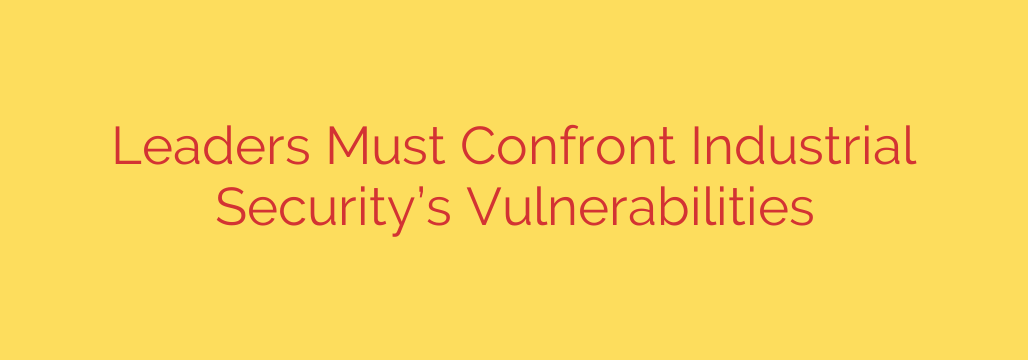
Protecting the operational technology environments that power modern industry is an increasingly urgent challenge that demands direct intervention from the highest levels of leadership. While information technology security has evolved significantly, the unique characteristics of industrial control systems (ICS) and operational technology (OT) networks present distinct and often unaddressed vulnerabilities. These systems, designed for functionality and reliability over security in many cases, form the backbone of critical infrastructure and manufacturing processes.
Unlike traditional IT systems, OT environments frequently rely on legacy systems that are difficult or impossible to patch, have long lifespans, and involve proprietary protocols. Connectivity between IT and OT networks, while necessary for efficiency, introduces significant attack surfaces. Furthermore, there’s often a gap in understanding and collaboration between IT security teams and OT engineers, hindering a unified approach to cyber defense. The potential impact of a successful cyberattack on these systems extends far beyond data breaches, threatening physical safety, environmental damage, and severe operational disruptions, leading to substantial financial losses and reputational damage.
Addressing these risks requires a fundamental shift in perspective and a proactive leadership mandate. Industrial security cannot be viewed as a technical problem relegated solely to the IT department. It is a core business risk that necessitates strategic planning, significant investment, and cross-functional collaboration involving engineering, operations, and security teams. Leaders must champion the development of a comprehensive OT security strategy, allocate necessary resources for risk assessment, segmentation, monitoring, and incident response capabilities. Building a culture of security awareness among all personnel, particularly those working directly with industrial systems, is also paramount.
Ultimately, enhancing the resilience of industrial operations against sophisticated cyber threats is a continuous effort. It requires boards and senior executives to prioritize industrial cybersecurity on their agenda, understand the unique challenges, and empower their teams to implement robust defenses. Failing to confront these vulnerabilities directly is no longer an option in today’s interconnected and threat-laden landscape. Strong leadership is the critical element in building a secure and reliable industrial future.
Source: https://www.helpnetsecurity.com/2025/07/03/ot-iot-threat-detection-confidence/








